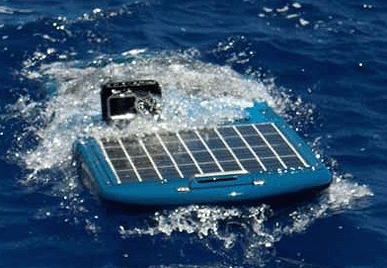Liquid Robotics’ Pacific Crossing (PacX) Wave Glider, named Papa Mau, completed its scientific journey across the Pacific Ocean to set a new world record for the longest distance travelled by an autonomous vehicle.
According to Liquid Robotics, Papa Mau navigated along a prescribed route under autonomous control, collecting and transmitting high-resolution ocean data.

The company is providing open access to this data as part of its PacX Challenge, a global competition seeking new ocean applications and research using the PacX data set.
During the journey, Papa Mau is said to have weathered gale-force storms, fended off sharks, spent more than 365 days at sea, skirted around the Great Barrier Reef and finally battled and surfed the East Australian Current (EAC) to reach its final destination in Hervey Bay near Bundaberg, Queensland, in Australia.
The vessel travelled through and measured more than 1,200 miles of a chlorophyll bloom along the Equatorial Pacific. These blooms indicate the proliferation of phytoplankton that is fundamental to ocean life and climate regulation. While typically monitored through satellite imagery, direct validation of chlorophyll blooms at this resolution provides a link between scientific modelling and in-situ measurement of the Pacific Ocean.
‘To say we are excited and proud of Papa Mau reaching its final destination is an understatement,’ said Bill Vass, chief executive officer of Liquid Robotics. ‘We set off on the PacX journey to demonstrate that Wave Glider technology could not only survive the high seas and a journey of this length but, more importantly, could collect and transmit ocean data in real time from the most remote portions of the Pacific Ocean. We’ve demonstrated delivery of ocean data services through the most challenging ocean conditions. Mission accomplished.’
Connected by an umbilical communication tether, the float stays on the surface of the ocean, moving up and down with the waves, while the sub pulls below the surface.
The separation between surface float and sub enables the harvesting of wave energy and transforms it directly into forward thrust.
PacX prize
An element of the PacX programme is the PacX Challenge, a competition designed to encourage scientists and students to make use of the PacX data in productive or innovative ways. Research abstracts were submitted from around the world to compete for the grand prize award of a $50,000 (£31,200) research grant from BP and six months of Wave Glider data services.
‘Liquid Robotics is proud to announce the PacX Science Board has selected five outstanding finalists to compete for the PacX grand prize,’ said Luke Beatman, oceanographer at Liquid Robotics and chairman of the PacX Science Board. ‘These scientists will conduct research into some of the world’s most challenging ocean issues, ranging from measuring the ocean’s health and respiration to studying the ocean’s biomass — the most fundamental organisms critical to ocean life.’





Glasgow trial explores AR cues for autonomous road safety
They've ploughed into a few vulnerable road users in the past. Making that less likely will make it spectacularly easy to stop the traffic for...